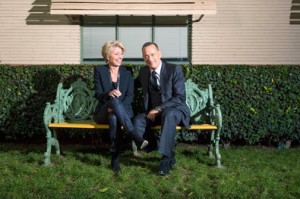Here’s an excerpt from “How do e-books change the reading experience?”:
Physical, paperbound books provide a sense memory that has informed so many of my most important encounters with storytelling: sight, smell and touch, yes, but also the experience of anticipation, progress and accomplishment. Not to mention recollection. To call to mind a certain Toni Morrison book has as much to do with the care she took in crafting it as the physical sensation of reading it. Twenty-five years after I first read “Song of Solomon,” I still remember the exact location of a particularly devastating, gorgeous passage about the emotional violence inflicted by Macon Dead on his wife and daughters. (It was situated toward the beginning of the novel, at the bottom of a left-facing page.)
Lastly, I feel a certain disappointment in the electronic format’s performative limitations. Anyone who owns and enjoys books understands that the volumes we keep on our shelves — and in our hands on a busy subway — tell several stories. There’s the author’s story, which is the actual text; there’s the publisher’s story, which has to do with the choice of format and design; and, finally, there’s the reader’s story — what a particular book telegraphs about one’s education and tastes. Who or what we choose to read can be as telling as the clothes we wear, and an e-book feels like a detail withheld, even a secret kept. (This is not necessarily a bad thing, and it probably explains why the three books I own about dealing with a loved one’s alcoholism are on my Kindle, not my bookshelf.) Unlike the shopworn cover of an early paperback edition of “Native Son” or the crisp jacket on the latest Donna Tartt, Kindles and Nooks tell others little to nothing about their owners, except that they enjoy a certain amount of disposable income.
At the very least, physical books provide a convenient and visible distraction: What else are wallflowers at pretentious cocktail parties supposed to busy themselves with? Oh, right: their iPhones.
http://www.nytimes.com/2014/01/05/books/review/how-do-e-books-change-the-reading-experience.html?pagewanted=2&hp
An astonishing number of comments come from readers with disabilities. Here’s a particularly moving example:
My left hand remains very balky after a small stroke two years ago. It seemed for a while that my leisure activity of choice was a thing of the past: page turning became a real chore and it was nearly impossible to keep a book in my hands for more than a minute before it landed on the floor. Enter Kindle rigged with a Velcro strap. I flip pages with my thumb and have no trouble keeping “my book” at the perfect reading angle. It is lighter than almost any book available in “dead tree” format and even my old Kindle is visually sharp. I understand the appeal of paper books but find the objections to e-readers irrelevant.
Does anyone else have the feeling, with an e-reader, that you are being turned into a revenue stream for Amazon? Not that that isn’t also true of print books as well. An additional concern is the proliferation of books on Amazon like the one linked to the url below. It is nothing more than a 20 page research paper, with sources like wikipedia, put together in a day or two. I made the mistake of purchasing it.
http://www.amazon.com/The-Real-Life-Mary-Poppins/dp/1482075032/ref=sr_1_6?ie=UTF8&qid=1388957779&sr=8-6&keywords=p.l.+travers
Finally, on two occasions, Amazon has sold e-book versions of The Annotated Peter Pan, unauthorized copies made and sold on Amazon until I wrote in to ask to have them removed (and they were).

